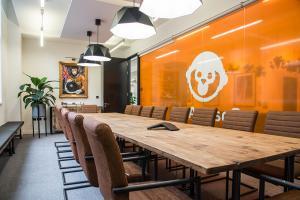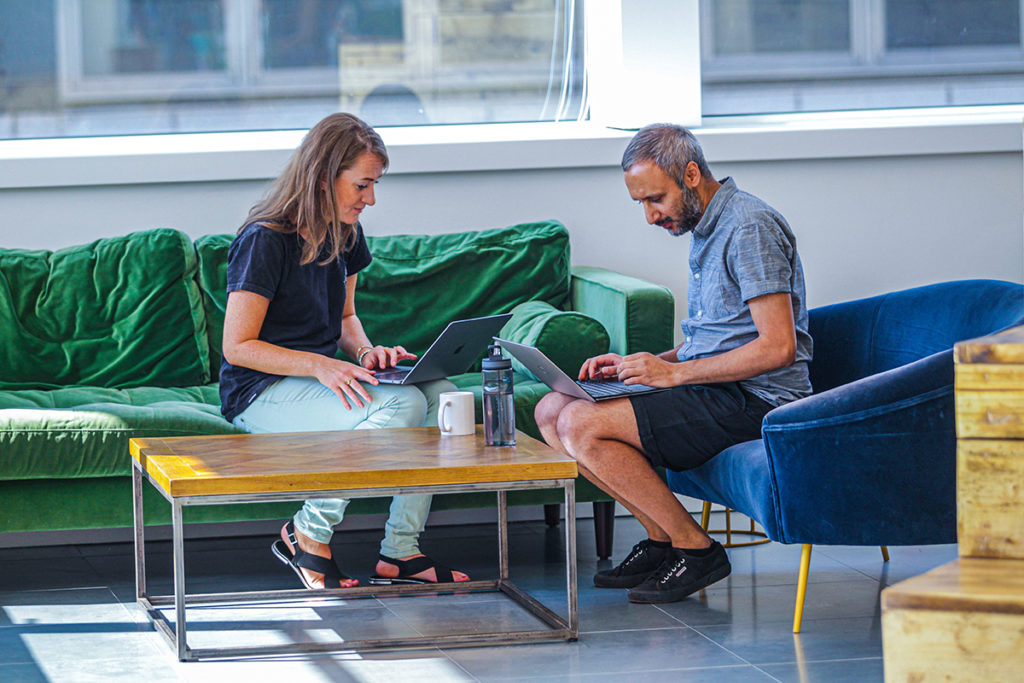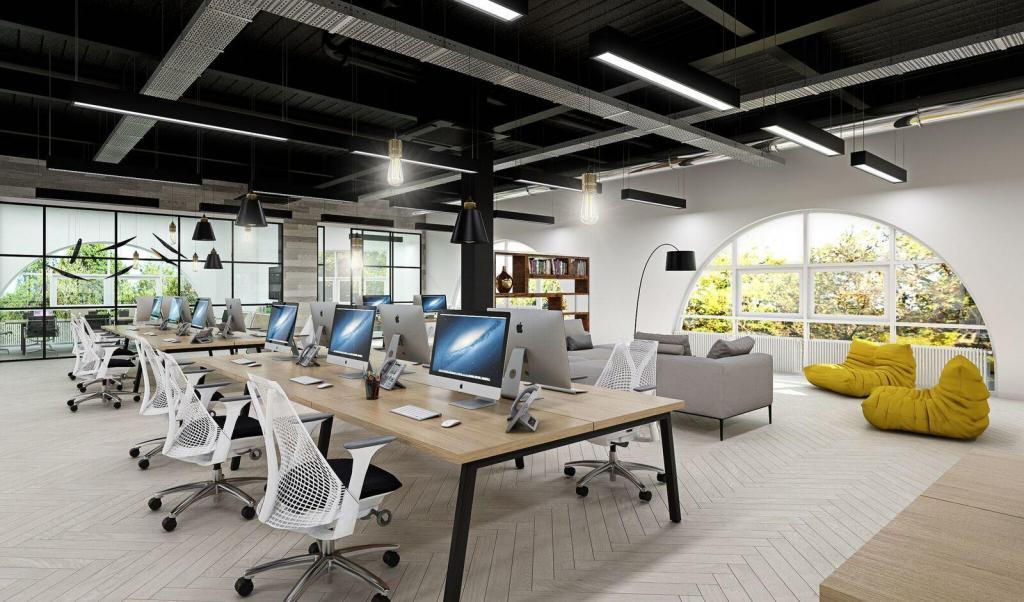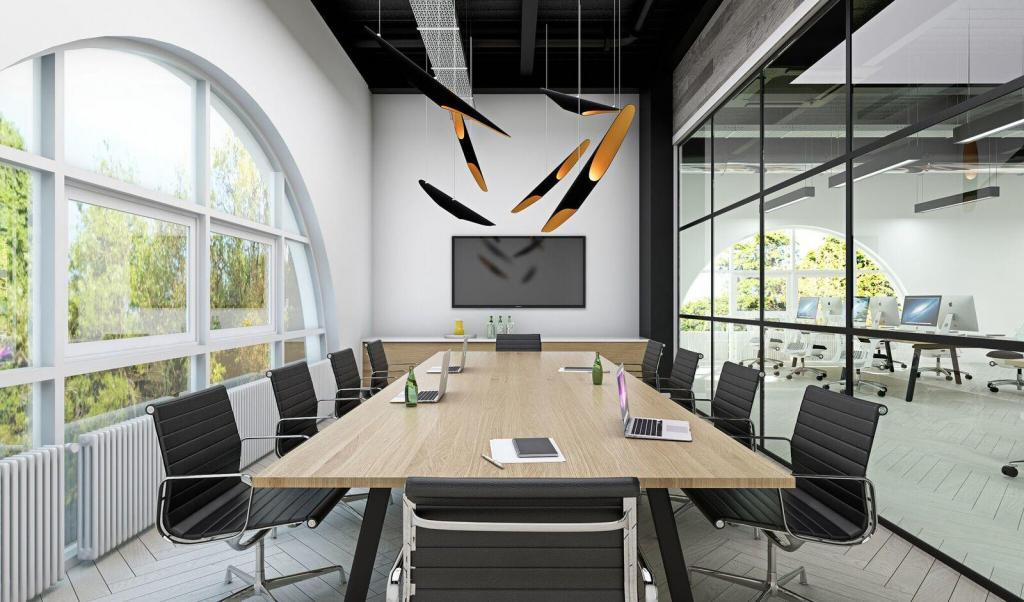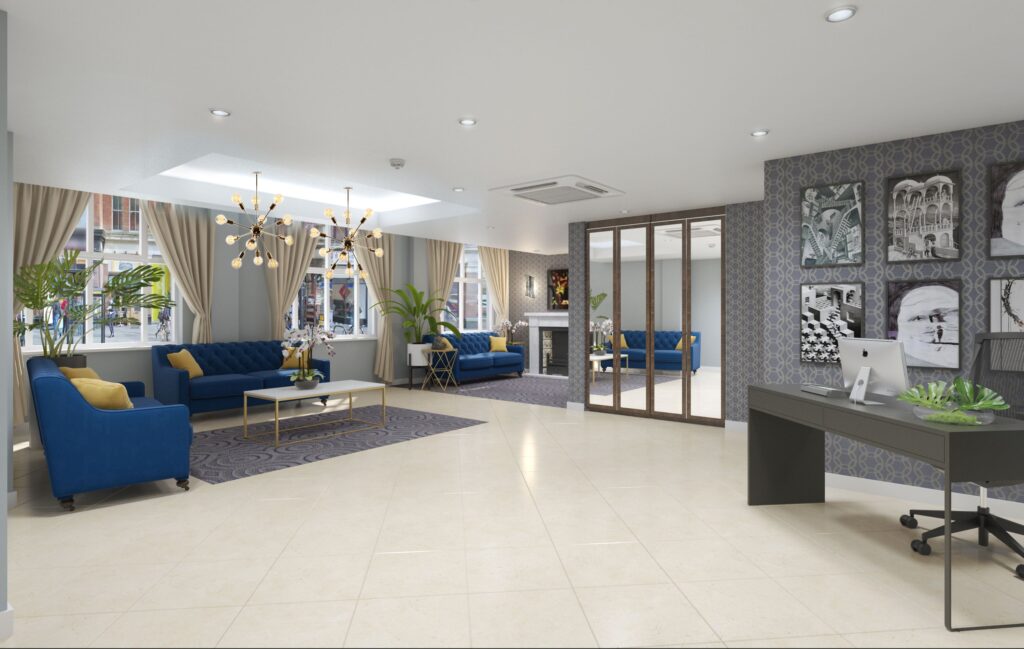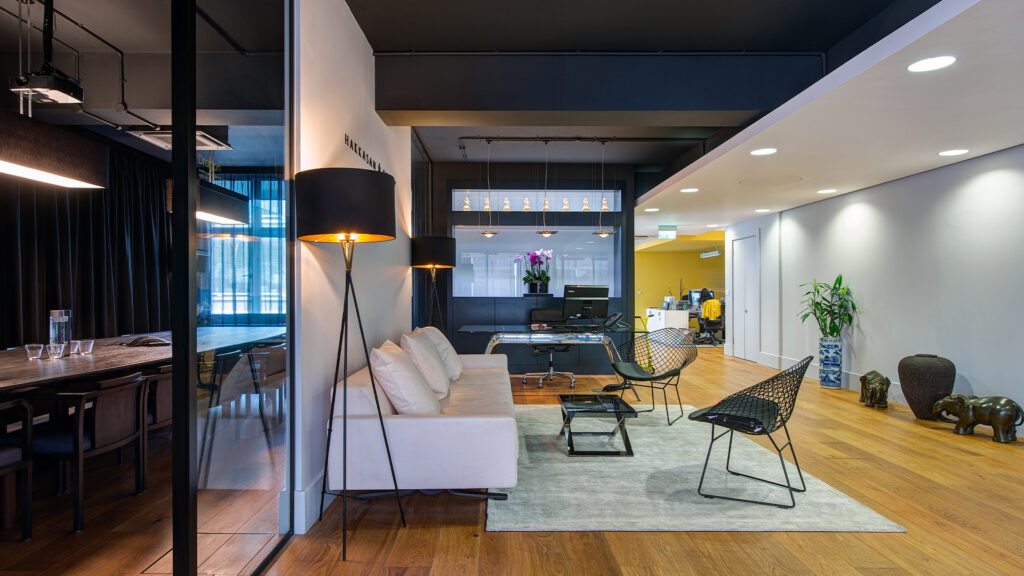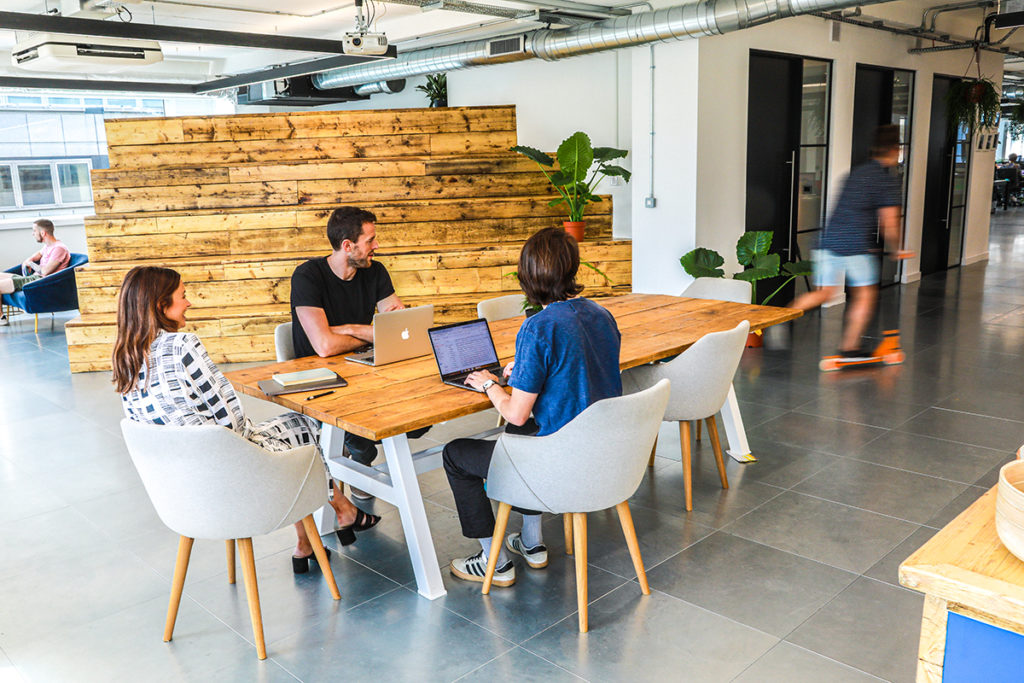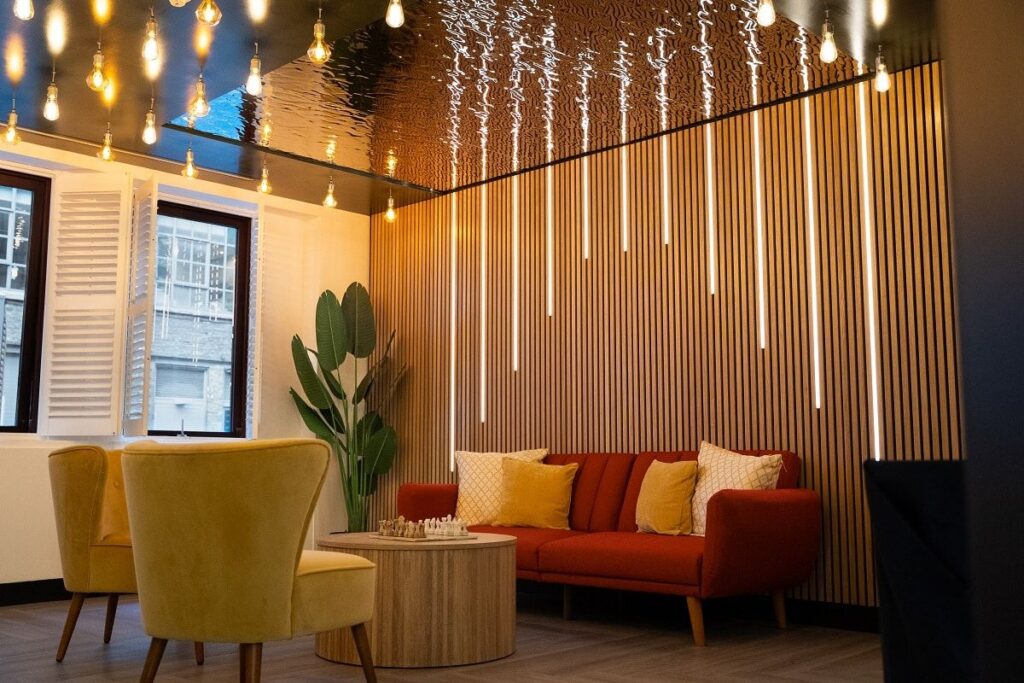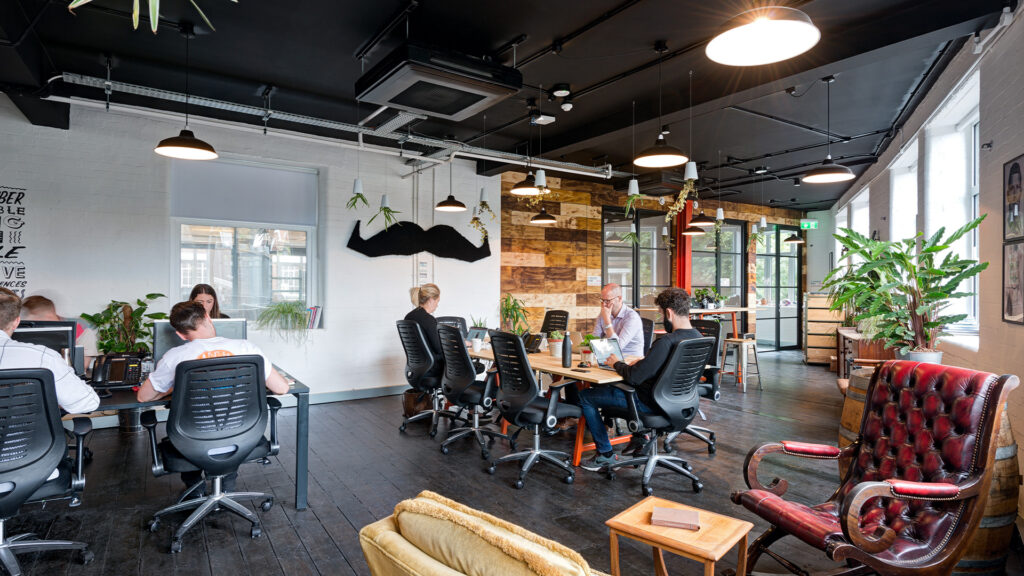Creating an office space that balances style, functionality, and environmental responsibility is no longer a luxury. It is an essential part of building a modern workplace. Sustainable office design puts people and the planet at the centre of every decision.
By focusing on smart material choices, energy efficiency, and wellbeing, you can create a workspace that benefits your team and the environment. Find out how you can transform your office interior design with sustainability in mind.
Defining Sustainable Office Design
Sustainable office design focuses on reducing the environmental impact of your workplace. It includes everything from the way a building is constructed to the furniture, lighting, and even the way waste is managed.
The goal is simple: To create an office that uses fewer resources, produces less waste, and supports a healthier working environment.
Green buildings have gained significant attention over the past decade. Certifications like BREEAM (Building Research Establishment Environmental Assessment Method) have helped guide businesses in developing environmentally friendly spaces.
Why Sustainable Office Design Matters
There are several reasons why businesses are choosing sustainable office interior design.
Environmental Responsibility
Companies are increasingly being held accountable for their environmental footprint. A sustainable workspace reduces carbon emissions, saves energy, and minimises waste, contributing to broader climate goals.
Health and Wellbeing
An eco-friendly office supports better physical and mental health. Improved air quality, access to natural light, and the use of non-toxic materials can help reduce stress and illness among employees.
Cost Efficiency
Although sustainable office interior design might seem costly at first, it often leads to significant long-term savings. Energy-efficient lighting, heating, and cooling systems cut down utility bills, while durable, high-quality materials reduce maintenance and replacement costs.
Brand Image
Clients and employees alike are drawn to businesses that show genuine care for the environment. A sustainable office can strengthen your brand reputation and attract top talent.
Key Elements of Sustainable Office Design
Creating a sustainable office involves careful consideration of multiple elements.
Energy Efficiency
One of the first areas to focus on is energy use. Simple changes like installing LED lighting, using motion sensors, and upgrading to energy-efficient appliances can make a noticeable difference. Many businesses are also installing solar panels to generate clean electricity on-site.
Sustainable Materials
Choosing the right materials is crucial. Look for furniture made from recycled or responsibly sourced wood. Use low-VOC (volatile organic compound) paints to maintain healthier indoor air quality. Recycled carpet tiles, reclaimed wood, and organic fabrics all support a greener office interior design.
Water Conservation
Incorporating water-saving features is another important step. Install low-flow taps, dual-flush toilets, and water-efficient dishwashers in your office kitchen areas.
Indoor Air Quality
Good air quality is vital for a healthy workplace. Plants not only improve office aesthetics but also help filter pollutants. Consider incorporating biophilic design elements, such as living walls, which bring nature indoors and improve the wellbeing of employees.
Waste Management
Effective recycling stations encourage staff to separate waste properly. You should also prioritise suppliers who use minimal or recyclable packaging to further reduce landfill waste.
Office Interior Design Tips for Sustainability
Bringing sustainability into your office interior design does not have to be overwhelming. Here are a few practical ideas to get you started.
Maximise Natural Light
Natural light reduces the need for artificial lighting and improves mood and productivity. Position desks near windows and use glass partitions to allow sunlight to flow through the space.
Choose Eco-Friendly Furniture
Instead of buying brand new, consider refurbished furniture. Look for suppliers that focus on sustainable production processes and use recycled or upcycled materials.
Plan Flexible Spaces
Design flexible areas that can easily be reconfigured as your team changes. This reduces the need for costly refurbishments and extra materials down the line.
Use Smart Technology
Smart thermostats, lighting systems, and energy monitoring tools help track and optimise energy use. Many companies are embracing technology to lower their carbon footprint.
Read more: What Type Of Office Space Is Right For Your Business?
Common Challenges in Sustainable Office Design
While the benefits are clear, there are a few challenges you might face when implementing sustainable office interior design.
Upfront Costs
Although energy-efficient systems and eco-friendly materials save money in the long run, the initial investment can be higher. Careful budgeting and planning are key to making it work.
Building Limitations
If you are working within an older building, retrofitting sustainable features may be more complicated. However, small steps like improving insulation, adding energy-efficient lighting, and using portable air purifiers can still make a big impact.
Supplier Transparency
Finding suppliers who genuinely prioritise sustainability can be difficult. Always ask about the sourcing of materials, manufacturing processes, and environmental certifications.
How to Start Your Sustainable Office Design Journey
Starting your sustainable design journey involves several practical steps.
Audit Your Current Office
Assess your current space and identify key areas for improvement. Look at energy use, water consumption, waste management, and material sourcing.
Set Clear Goals
Define your sustainability targets. Whether it is achieving a BREEAM certification or reducing energy use by a certain percentage, clear goals keep your efforts focused.
Involve Your Team
Educate employees about the changes and encourage their participation. Building a culture of sustainability is just as important as the physical design.
Work with Experts
If possible, collaborate with architects, designers, and sustainability consultants experienced in eco-friendly office interior design. Their expertise can help you avoid common pitfalls and create a truly effective space.
Trends in Sustainable Office Interior Design
There are several trends shaping the future of eco-friendly workplaces.
Circular Economy Principles
Circular design focuses on creating spaces where materials are reused, recycled, or returned to the environment safely. Offices adopting this approach minimise waste and maximise resource efficiency.
Wellbeing-Centred Design
More companies are designing offices that directly support mental and physical wellbeing. This includes features like quiet zones, meditation rooms, and ergonomic furniture.
Carbon-Neutral Workspaces
Some businesses are going a step further by designing offices that are fully carbon-neutral. This includes offsetting emissions and using 100% renewable energy sources.
Local Sourcing
Using locally sourced materials reduces transportation emissions and supports the local economy. It also ensures materials are suited to the local climate and building regulations.
More trends can be found here: Office Design Trends & Predictions.
Make a Powerful Statement About Your Values
By embracing sustainable office interior design, you are making a powerful statement about your values. You are showing employees, clients, and the wider community that you care about the environment, health, and the future.
Small changes can add up to a big difference. Whether it is switching to energy-saving light bulbs or investing in recycled furniture, every step counts towards a more responsible workplace.
If you are ready to take the next step, start today. Assess your space, set your goals, and commit to building an office that is better for both people and the planet.


